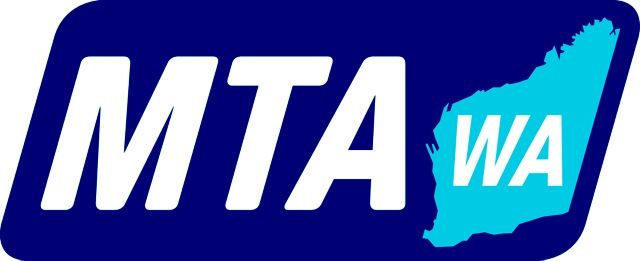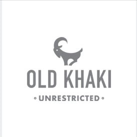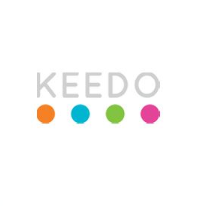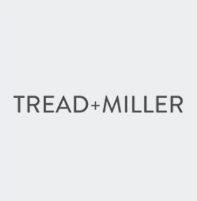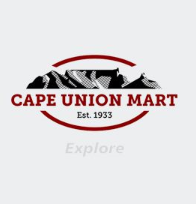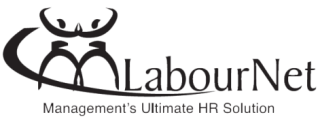Information
-
MTAWA MEMBER NUMBER
-
TRADING NAME.
-
MANAGERS NAME.
-
AUDITORS NAME. DARRYL DANIELS
-
DATE OF AUDIT.
1.0 MANAGEMENT SYSTEMS DOCUMENTATION
-
1.1 Safety and Health Policy available and current
-
1.2. Anti Smoking Policy available and current
-
1.3 Anti Bullying Policy available and current
-
1.4 Mobile Phone Policy available and current
-
1.5. Injury Management Policy / Procedures document
-
1.6. OSH Act and Regulations available and current
-
1.7. Safety Inductions completed for all employees
-
1.8. Position Descriptions available for all employees
-
1.9. Is there an annual Training Plan and is it relevant
-
1.10. Training Records completed for all employees
-
1.11. MDL and High Risk Licences retained on file
-
1.12. Hazard Report Forms available
-
1.13. Hazard/Risk Register maintained and items actioned
-
1.14. Incident and Injury Report Forms available
-
1.15. Incidents investigation and controls implemented
-
1.16. WorkSafe notified of Reportable incidents
-
1.17. Lost Time Injuries/Illnesses Investigated
-
1.18. Hazardous Substances Register current
-
1.19. Material Safety Data Sheets available and current
-
1.20. Training/Access of MSDS and documented
-
1.21. Safe Operating Procedures available and current
-
1.22. Emergency Procedures displayed and current
-
1.23. Evacuation plan displayed in prominent locations
-
1.24. Documented Procedure for Resolution of issues
-
1.25. Is there a Safety & Health Committee
-
1.26. Is there a Process for consultation on OSH issues
-
1.27. Maintenance Records for fixed and mobile Equipment
-
1.28. Monthly workplace inspections undertaken
-
1.29. Have contractors provided insurance documents PL/WC
-
1.30. Pre employment Medicals/Physical Assessments
-
1.31. Schedule for Health Surveillance available/observed
2.0. MOVEMENT AROUND WORKPLACE
-
2.1. Floors even and free of trip hazards
-
2.2. Floors clean and slip hazards
-
2.3. Oil and Grease removed
-
2.4. Floors kept free of rubbish
-
2.5. Entry and walkways kept free from obstructions
-
2.6. Walkways free of hoses or electrical cords
-
2.7. Walkways clearly marked
-
2.8. Pedestrian and vehicular traffic segregated
-
2.9. Doors do not open across walkways
-
2.10. Steps & stairs in good condition
-
2.11. Hand rails provided and in good condition
-
2.12. Drains adequately covered
-
2.13. Restricted access areas identified with signage
-
2.14. Adequate safe access and egress to workplace
-
2.15. Rubbish and unused material cleaned away
3.0. GENERAL LIGHTING
-
3.1. Adequate natural light or illumination for tasks
-
3.2. Good light reflection from walls and ceilings
-
3.3. No direct or reflected glare
-
3.4. Light fittings clean and in good condition
-
3.5. Portable task lighting available
4.0. STORAGE
-
4.1. Materials stored in racks/bins wherever possible
-
4.2. Storage designed to minimize lifting problems
-
4.3. Floors around racking clear of rubbish
-
4.4. Racks and pallets in good condition
-
4.5 Appropriate equipment provided for access
5.0. VISITORS
-
5.1. All personnel and visitors can be accounted for
-
5.2. Appropriate footwear worn by visitors and personnel
-
5.3. All visitors advised to report to office
6.0. ELECTRICAL
-
6.1. Electrical installations installed correctly to minimise risk
-
6.2. Evidence of maintenance/testing in place
-
6.3. Components clearly marked & marked RCD protected
-
6.4. Switchboard free from obstructions
-
6.5. Emergency shut down procedure in place
-
6.6. Residual Circuit Breakers Installed
-
6.7. RCD's regularly tested
-
6.8. Power points marked RCD Protected
-
6.9. Testing and Tagging program in place RCD/Hand tools
-
6.10. Electrical equipment has current Inspection Tag
-
6.11. No broken plugs, sockets and switches
-
6.12. Connection moulded or transparent plugs
-
6.13. No frayed or damaged leads
-
6.14. No temporary leads on floor
-
6.15. No strained leads or flexed plugs
-
6.16. Power boards available if required (no double adaptors)
7.0. POWER TOOLS
-
7.1. Adequately guarded
-
7.2. No obvious damage to plugs & cords
-
7.3. Tools inspected regularly and prior to use
-
7.4. Current electrical test/tag attached
-
7.5. Portable RCD'S available and used
-
7.6. Tools turned off and stored safely when not in use
-
7.7 Register of portable electrical equipment
8.0. FIXED PLANT & MACHINERY
-
8.1. Certified plant (compressor) registered/serviced
-
8.2. Hoist Maintenance recorded in log book
-
8.3. Moving parts of machinery correctly guarded to AS
-
8.4. Emergency stops within easy reach of operator
-
8.5. Manuals/Operating procedures available/understood
-
8.6. Plant can be adequately isolated and locked out
-
8.7. Isolation procedures evident and understood/followed
-
8.8. Adequate and safe access for operation/maintenance
-
8.9. Machinery kept clean
-
8.10. Adequate work space around machinery
-
8.11. No bending or stooping required
-
8.12. Correct tools are provided
-
8.13. Is there a preventative maintenance program
9.0. MOBILE PLANT
-
9.1. Seat belts fitted and worn
-
9.2. Mobile plant inspected daily prior to use (pre-start checks)
-
9.3. Log books/pre-start records available
-
9.4. Are operators deemed competent to operate mobile plant
-
9.5. Are operators of High Risk Plant Licensed
-
9.6. Register of High Risk Licences maintained
-
9.7. Plant maintained in clean condition
-
9.8. Industrial fork lift complies with AS/NZS 1873
-
9.9. Is there a preventative maintenance program for plant
-
9.10. Do man cages comply with Australian Standard
-
9.11. Is there safe access to operate/maintain mobile plant
-
9.12. Site speed limits signed
-
9.13. Are pedestrians and vehicular traffic/plant segregated
10.0. MECHANICAL LIFTING EQUIPMENT
-
10.1. Mobile Crane/Engine Lift SWL identified on rating plate
-
10.2. Mobile Crane/Engine Lift maintenance records available
-
10.3. Overhead Gantry - SWL identified on rating plate
-
10.4. Block and Tackle - SWL identified on rating plate
-
10.5. Chains/Slings and Lifting equipment on register
-
10.6. Chains and Slings have SWL marked
-
10.7. All equipment testing and inspection records available
-
10.8. Drum lifters in good condition
-
10.9. Trolleys in good condition
-
10.10. Safe pours are serviceable and safe for use
11.0. MANUAL HANDLING
-
11.1. Are mechanical lifting aids provided
-
11.2. Manual handling hazards have been identified
-
11.3. Repetitive tasks identified and controlled
-
11.4. Manual Handling Risk Assessments completed
-
11.5 Work rotations promoted/observed for repetitive
-
11.6. Manual Handling training provided annually
12.0. FALL PREVENTION
-
12.1. Fall prevention measures in place
-
12.2. Work platforms used where possible
-
12.3. Fall arrest systems comply with AS & inspected
-
12.4. Anchorage points are rated and inspected
-
12.5. Ladders comply with AS and inspected regularly
-
12.6. Work from ladders not permitted (use for access only)
-
12.7. Edge protection provided (handrails, kickplates)
-
12.8. Holes and openings covered
-
12.9. Those Working at Height have accredited training
13.0. HAZARDOUS SUBSTANCES / DANGEROUS GOODS
-
13.1. Stored and segregated in accordance with DG Code
-
13.2. Containers correctly marked and labelled
-
13.3. Containers with decanted substances are labelled
-
13.4. Register of Hazardous Substances maintained/available
-
13.5. MSDS current & readily available for chemicals in use
-
13.6. Risk Assessment for chemicals completed/available
-
13.7. Hierarchy of controls taken into account
-
13.8. Appropriate Chemical Training provided & recorded
-
13.9. Adequate PPE provided and worn
-
13.10.Safety shower and eye wash provided and working
-
13.11 Are Chemicals adequately bunded
-
13.12 Dangerous Goods Manifest provided
-
13.13 Are licences available for Bulk Dangerous Goods
-
13.14 Procedures in place for correct disposal of chemicals
-
13.15 Hydrocarbon / other spill kit & procedure available
-
13.16 Health surveillance undertaken & recorded if required
-
13.17 Containers earthed when decanting flammables
14.0 WELDING AND OTHER HOT WORK
-
14.1. Is atmosphere confirmed as safe when welding
-
14.2 Welding and allied processes compliant with AS 1674
-
14.3. Welding screens provided to protect people
-
14.4. Flash arresters fitted
-
14.5. Is equipment double insulated
-
14.6. Are hoses free from damage
-
14.7. Hot Work permits readily available
-
14.8. Cylinders stored correctly (Oxygen & Fuels segregated
-
14.9. Cylinders in cages or chained
-
14.10. Is required PPE available and serviceable
15.0. FIRE
-
15.1. Extinguishers in place and marked for type of fire
-
15.2. Fire equipment recently serviced and indicated on tag
-
15.3. Adequate directional evacuation signs
-
15.4. Fire exits clearly identified
-
15.5. Emergency Exits and exit routes kept free of obstruction
-
15.6. Exit door easily opened from inside
-
15.7. Fire Instructions available and displayed
-
15.8. Regular fire/evacuation drills carried out
-
15.9. Training sessions conducted annually
16.0. FIRST AID
-
16.1. Kits adequate for hazards and number of workers
-
16.2. Employees aware of location of kit
-
16.3. Trained First Aiders available and identified
-
16.4. Kits maintained in clean and tidy condition
-
16.5. Kits serviced regularly
-
16.6. Injury reporting procedure understood
-
16.7. Emergency numbers displayed
17.0. PERSONAL PROTECTIVE EQUIPMENT FOOT/CLOTHING/HEARING/EYE/RESPIRATORY
-
17.1. Provided and adequate for hazards and tasks
-
17.2. Complies with relevant Australian Standard
-
17.3. Personnel instructed in fit, use and maintenance
-
17.4. PPE maintained in good working order
-
17.5. Is PPE used in correct manner
-
17.6. Air Supplied respirators used for spraying 2-Pack paints
-
17.7. Respirators cleaned and checked regularly
-
17.8. Chemical resistant gloves worn for spraying 2-pack
-
17.9. Chemical resistant coveralls worn for spraying 2-pack
-
17.10. Breathing air tested at least annually
18.0. SIGNAGE
-
18.1. Area where PPE required identified by correct signage
-
18.2. Are First Aid Kits adequately signed
-
18.3. Fire Equipment signed
-
18.4. Emergency Exits signed
-
18.5. Welding signs available
-
18.6. Hazchem signs in place
-
18.7. Workshop signed "Authorised Entry Only"
-
18.8. Signage advising visitors to report to reception
-
18.9. Speed Limit and other traffic signage
-
18.10. Emergency Assembly Point
-
18.11. Other Danger/Caution signs as required
19.0. OFFICE HAZARDS
-
19.1. Stable non-slip floor coverings
-
19.2. Chairs fully adjustable and ergonomically positioned
-
19.3. Workstations set up correctly
-
19.4. No glare onto screen based equipment
-
19.5. No electrical leads across thoroughfares
-
19.6. No clutter, files, boxes etc on floors
-
19.7. Electric heaters safe distance from combustibles
-
19.8. Filing cabinet drawers open
20.0. NOISE
-
20.1. Noise assessment conducted
-
20.2. Hearing conservation program developed
-
20.3. Noise controls have been identified & implemented
-
20.4. Personal hearing protection provided (PHP)
-
20.5. Personnel trained in selecting/fitting/maintaining PHP
21.0. SPRAY BOOTHS
-
21.1. Extraction ventilation in mixing/pouring area
-
21.2. Spray booth used for hazardous paint or primer
-
21.3. Spray booth inspected for paint build up on filters/surfaces
-
21.4 Exhaust air filters present and correctly fitted /good airflow
-
21.5. Booth regularly maintained and cleaned (records kept)
-
21.6. Spray booth made of non-combustible materials<br>
-
21.7. Spray booth has smooth easy to clean interior
-
21.8. Lights are in a sealed enclosure (no ignition source)
-
21.9. Emergency exits easily open and have signage
-
21.10. Signs "Warning Toxic/Flammable vapours may be present"
-
21.11. Spray booth exhaust stack vertical and 3m above roof
-
21.12. Air filtered or scrubbed before entering exhaust system
-
21.13. Filters are replaced regularly and this is documented
-
21.14. Airflow check in accordance with AS4114 and recorded
-
21.15 Written SOP displayed on spray booth
-
21.16. Employees using spray booth are trained in operating
-
21.17. No food or drinks permitted in spray booth
-
21.18. Hands not cleaned with thinners
-
21.19. a Employees using isocyanates have regular checks - Skin
-
b - Respiratory System
-
c - Urine Testing
22.0. STAFF AMENITIES
-
22.1. Hand washing facilities provided / paper towel / continuous roll towel
-
22.2. Adequate toilets for number of workers
-
22.3. Sanitary disposal units provided
-
22.4. Lunch room facilities adequate for number of workers
-
22.5. Cool drinking water provided
-
22.6. Utensils and crockery clean
-
22.7. Food heating equipment clean and maintained
23.0 EXTERNAL
-
23.1. No rubbish or spills evident
-
23.2. Bins located at suitable points
-
23.3. Bins emptied regularly
-
23.4. Safe disposal of oily rags
-
23.5. Oil recovered and/or disposed of safety
-
23.6 Oil drums bunded
-
23.7. No evidence of environmental spills
-
23.8. Spills not permitted to enter stormwater drains or similar
-
23.9. Drains covered and grates in good condition
-
23.10. Vegetation and long grass cut back
-
23.11. Combustible items stored away from buildings
-
23.12. Designated smoking area safe distance from flammables
-
23.13. Asbestos identified by testing and signed
-
23.14. Adequate external lighting
-
23.15. Adequate parking provided
-
23.16. Traffic management plan in place
-
23.17. No pedestrians permitted behind vehicles likely to reverse
-
23.18. No potholes evident in walkways
-
23.19. No slip/trip/fall hazards
24.0. RECYCLED ITEMS INSPECTED
-
24.1. Recycled plastic bumpers
-
24.2. Recycled steel parts
-
24.3. Recycled cardboard
25.0. ADDITIONAL ITEMS INSPECTED
-
25.1. Mezzanine floor to standard
-
25.2. Hand rails in place
-
25.3. 100mm Toeboard comply
-
25.4. Fix correct steps and landing
-
25.5 Milk crates evident
